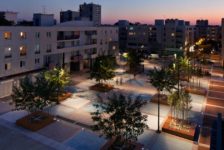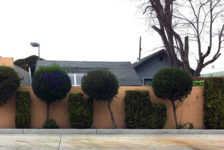Zhongshan Shipyard Park designed by Turenscape As cities grow and space becomes tight, urban planners and architects are taking a bigger interest in how, when and which spaces can be redesigned in order to take advantage of the existing land. The main intention is not to keep cities from growing, but to design a better environment inside them. Recovering urban space requires integrating the project within its context. Integration occurs at different levels – social, urban, and architectural — but most importantly at the cultural level. The influence and success of a project depends on how it interacts with the people who live there. With this consideration, designers transforming a site into a new space must recognize the connection that exists between the site and the people.
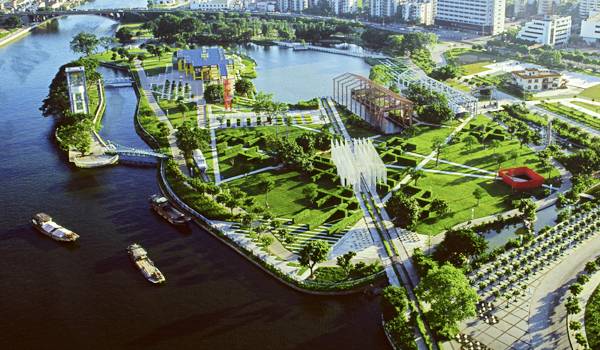
Overview of the shipyard park. Credit: Turenscape
One such project is Zhongshan Shipyard Park, by Turenscape studio, which was designed to recover a unique space that has been part of the daily lives of the people who live in Guangdong Province, China, for more than half a century. The park combines man, nature, and spirits.
A Brief History To get a better understanding, we have to review part of the park’s history.
The 11-hectare (27-acre) site was home to a shipyard built in the 1950s. The company went bankrupt in 1999. This industrial site represents 50 years of Socialist industrial history and was a witness to China’s Cultural Revolution. Its location, between the city and the flow of the Qijiang River, enforces its function as a link between nature and man made spaces.

“This industrial site represents 50 years of Socialist industrial history and was a witness to China’s Cultural Revolution”. Credit: Turenscape
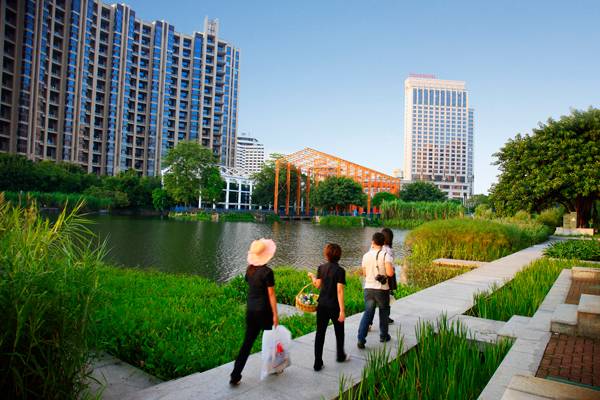
An harmonious blend of city, nature and people. Credit: Turenscape
The master plan for the ecological park called for bringing the water — the river — into the city and using the existing industrial infrastructure of the shipyard to integrate the urban and natural contexts of the site. The landscape design met the challenge of respecting the current and future flow of the Qijiang River, one of the main rivers in China. Because part of the park includes a lake connected to this river,
water fluctuation levels can be up to 1.1 meters per day. This problem was solved by proposing a network of bridges at various levels connecting different areas of the park, as well as terraces defined by pavement and native plants and trees.

Working with existing industrial infrastructure. Credit: Turenscape
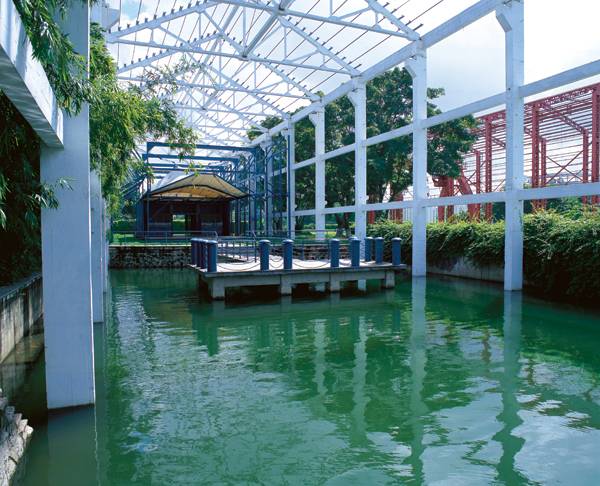
Industrial frame used to enhance design. Credit: Turenscape
by Loft Publications Another great aspect that follows the line of natural integration is the presence of existing trees, mainly old ficus trees.
A 20-meter-wide canal was dug to create an island to preserve them. As a biotope, the native plants and trees, together with mixed grasses, form natural habitats that create a unique link among the river, the historical aspect of the site, and the urban interconnection that is needed for the park to function properly. The recovery of the shipyard site and turning it into a green area depends on the appreciation and acceptance of the people. Despite being an historical place, the park merges into the urban fabric through a network of paths and urban facilities that were extended into it, such as remnant rusty docks that are reused for tea houses (local people customarily drink tea in tea houses).
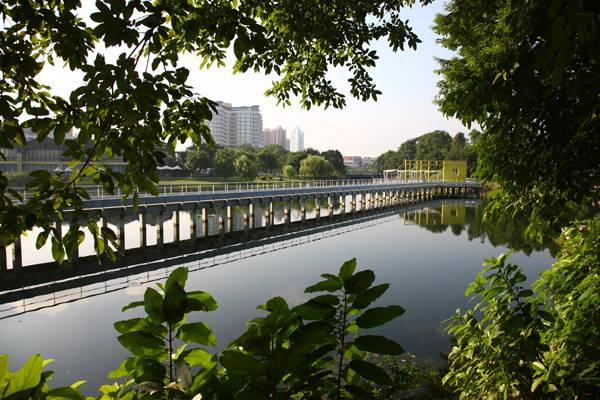
One of the bridges used at the park. Credit: Turenscape
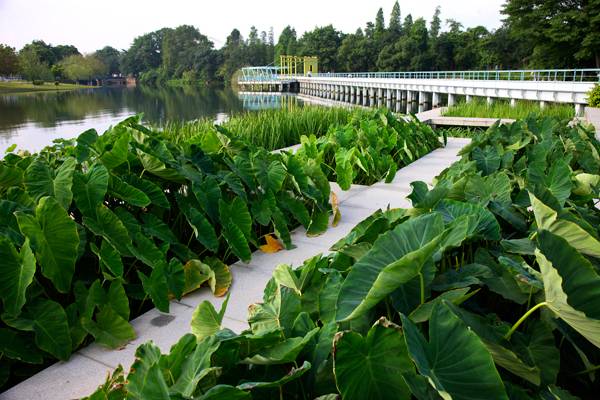
Lush vegetation help to make this park an ecological haven. Credit: Turenscape
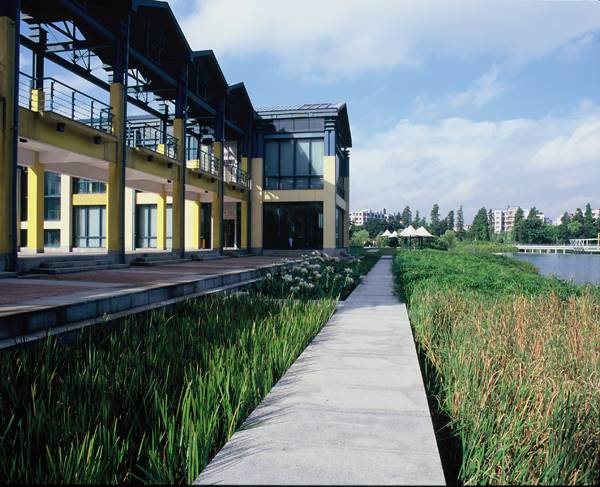
Rich planting makes for an idyllic and peaceful setting. Credit: Turenscape
The machinery that was once part of the factory was left intact for preservation reasons. Thus, the landscape design of the park mixes programming, nature, existing vegetation, urban connection, and historical elements into one solid project that fulfill the needs of the people.
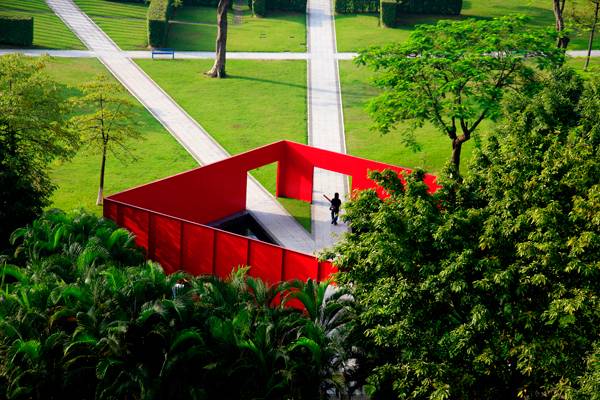
Striking red box feature makes for interesting spaces and really adds to the vibe of the park. Credit: Turenscape
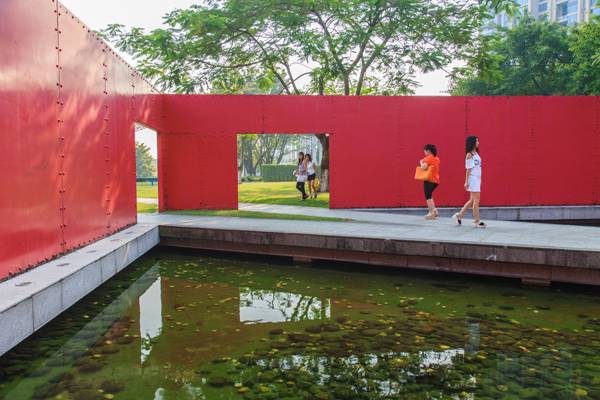
Inside the container. Credit: Turenscape
Finally, it is important to mention that the park design has won a series of international prizes, including the Global Award for Excellence (2009), the ULI excellence award (2009), the gold medal of fine arts from the ministry of Culture in China (2004), and the ASLA Design Honor Award (2002).
Other articles featuring Turenscape: Turenscape Design Outstanding River Park Top 10 Names In Landscape Architecture Today Article written by Luis Eduardo Guisar Benitez
Published in Blog












